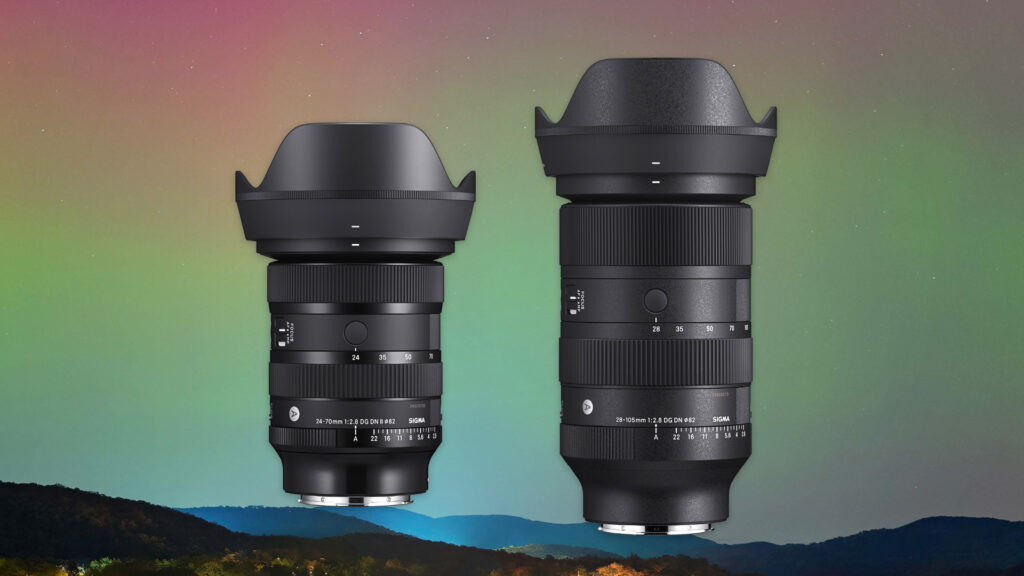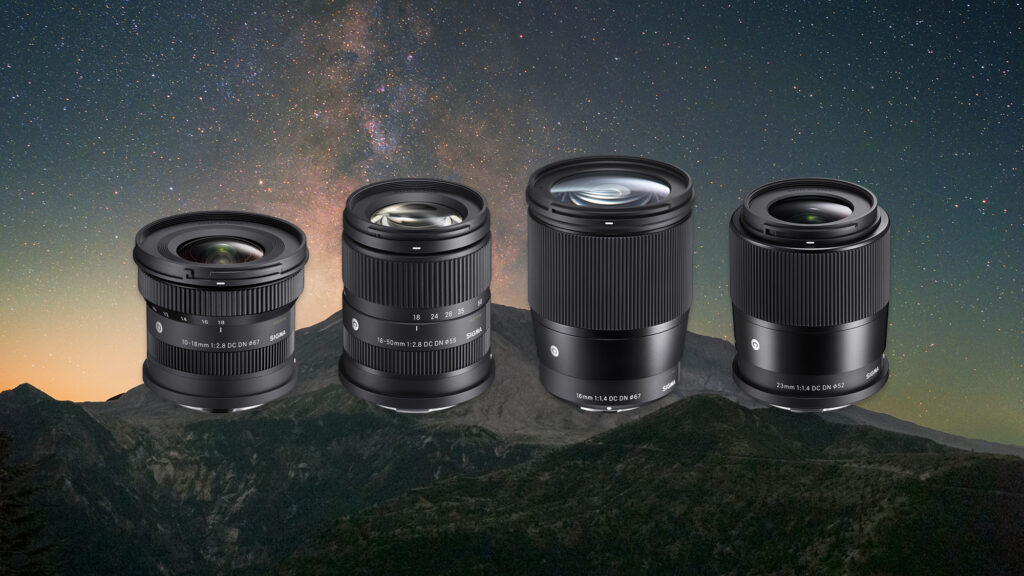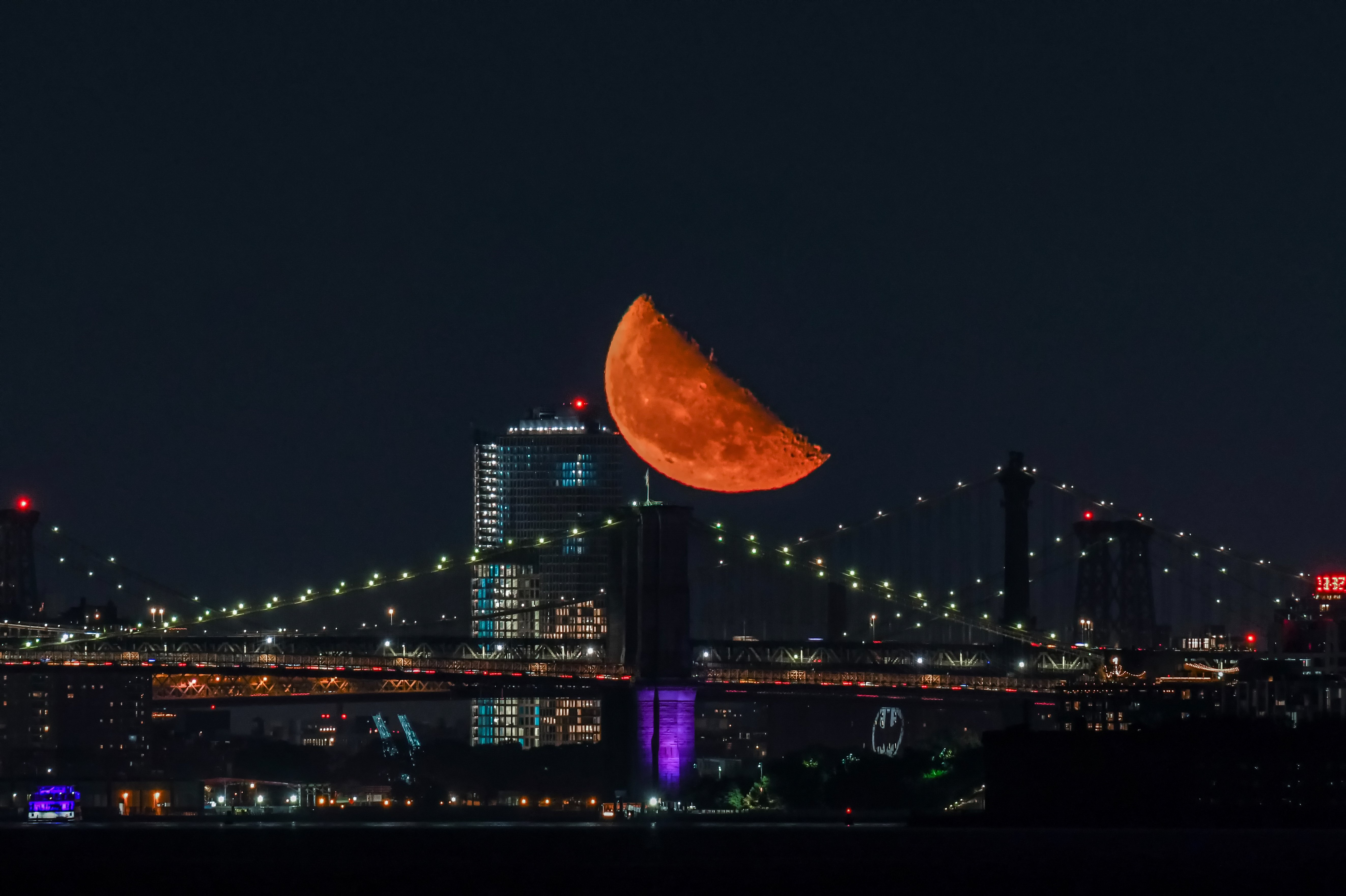
Photographing the moon aligned with architectural and natural landscape features can be quite challenging—but if you plan your vantage point ahead of time—the end result can be the key to your success! A lot of photographers dream of getting that “huge moon” at moonrise. Now we can accomplish that by using telephoto lenses and planning with apps such as Photo Pills and The Photographer’s Ephemeris.
Planning Your Moon Shoot
Plotting your location ahead of time, using different techniques will improve your final result. It’s best to go to the location ahead of your shoot so you can get your bearings with parking, to make sure your view isn’t obstructed by trees, construction, or other shot-ruining distractions. None of these images are composites! They are one image only. Using apps such as Photo Pills or The Photographer’s Ephemeris will be a key to your success when you’re trying to align moonrise or moonset over your target such as The Brooklyn Bridge or the Empire State Building. Both of these apps will help show you when, and where, to set up to align the moon.
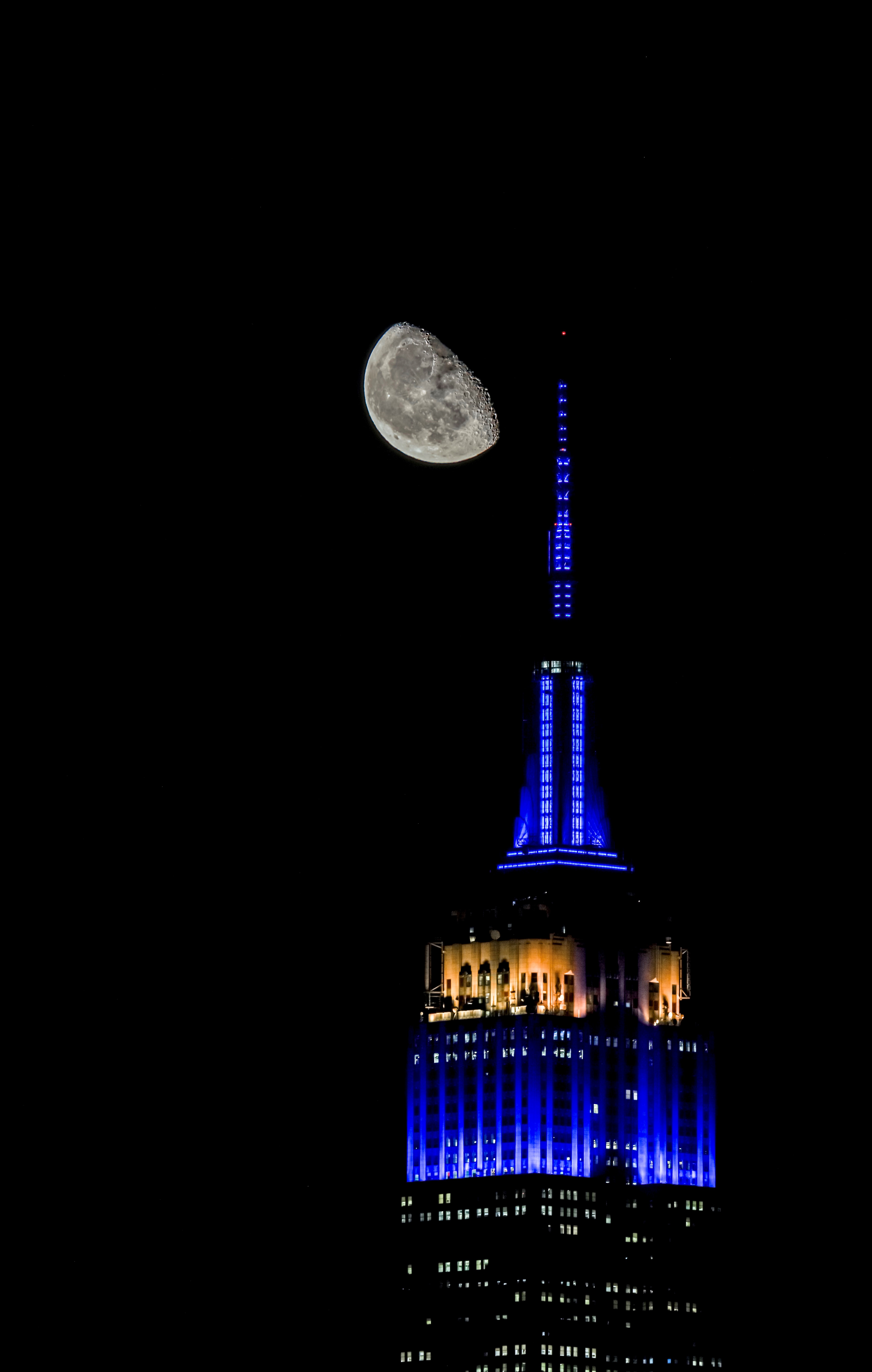
Gear
Checking your gear is important before you head out on a shoot. I always test my cameras and lenses before I leave. There’s nothing worse than showing up and having gear not working correctly!
Extra Batteries
I always pack a couple of extra batteries while shooting the moon. I spend most of the time in live view and it can drain your battery! Weather also plays a roll on your battery life: colder weather drains batteries quicker.
Sturdy Tripod
It’s vital to have a sturdy tripod, especially while shooting with a telephoto lens. There’s a lot of weight to a telephoto lens — such as a SIGMA 60-600mm F4.5-6.3 DG OS HSM | Sports. Sometimes you could be shooting at a long exposure and a sturdy tripod will help prevent motion blur.
The Right Lens
What is the right lens? If you want that “big moon” I would suggest using a 60-600mm F4.5-6.3 DG OS HSM | Sports, 150-600mm F5-6.3 DG OS HSM | Contemporary or even a 70-200mm F2.8 DG OS HSM | Sports + 2X Teleconverter. Using a 2X Teleconverter is very helpful when you’re shooting far away from your target.
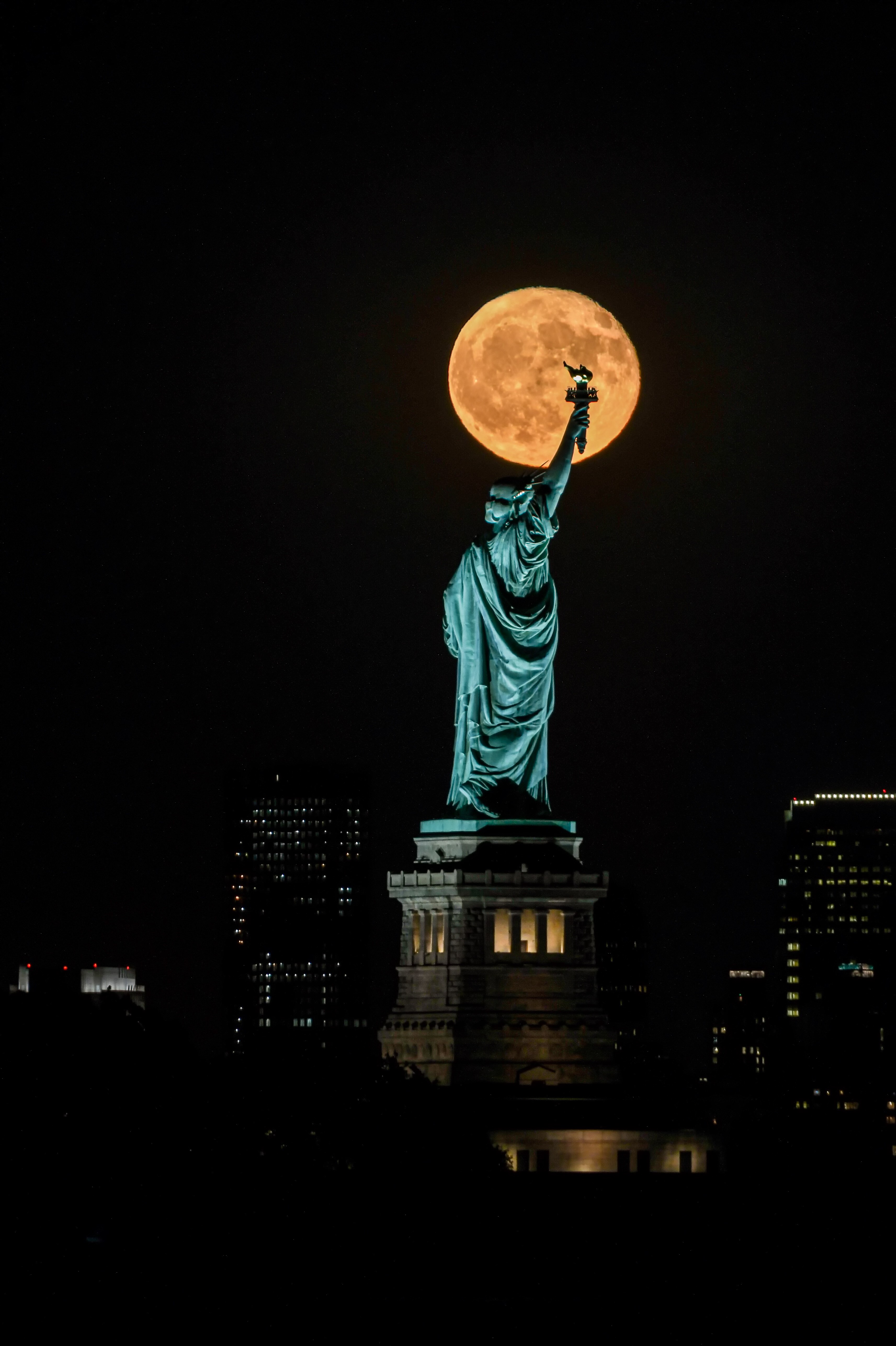
Getting this shot above was a bit challenging. I had to have the tripod balanced on rocks and make sure that I didn’t have any motion blur.
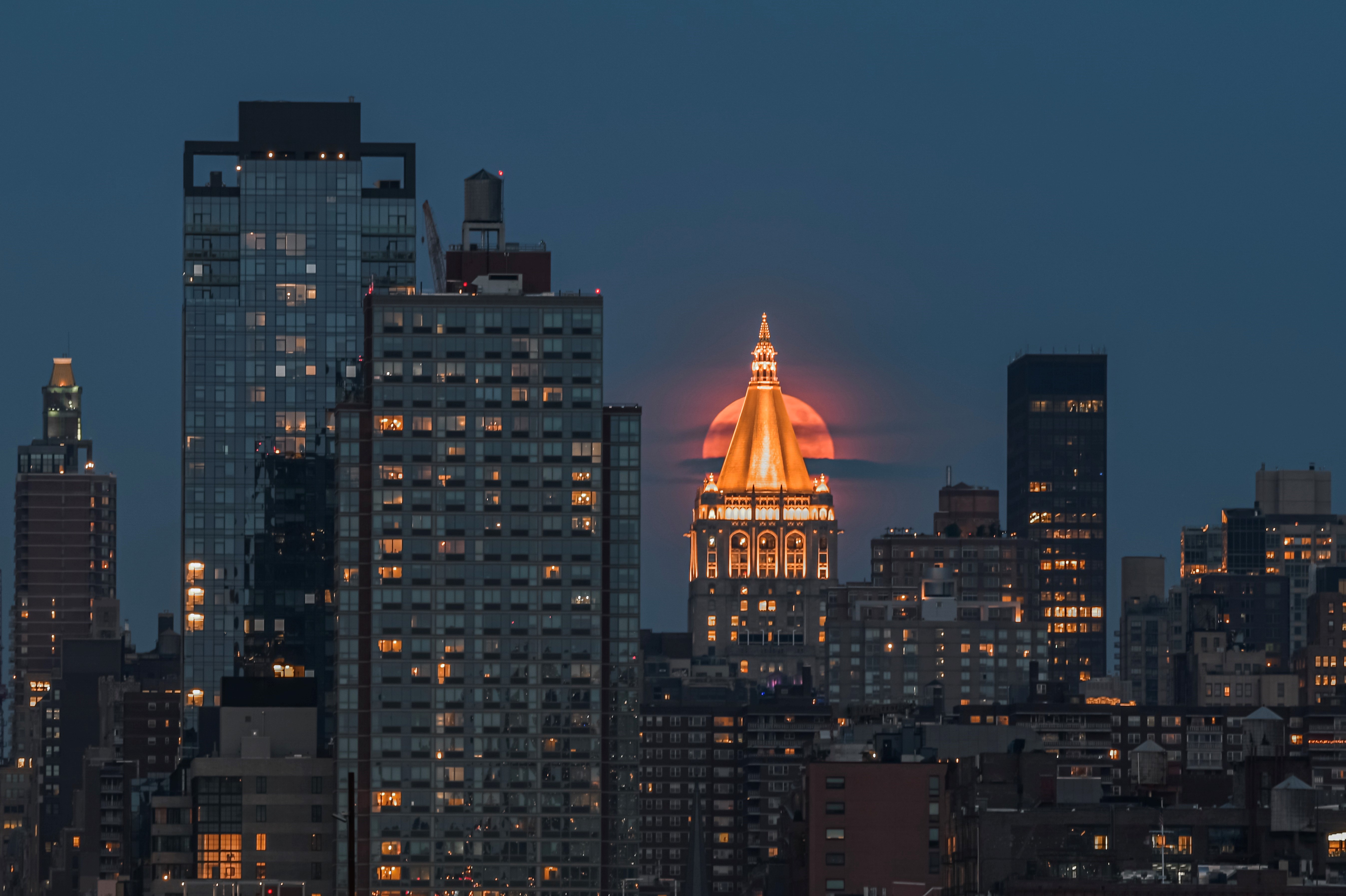
How I Get The Shot
It’s important to have patience while shooting. Sometimes things will go wrong, such as your camera not focusing due to low lighting and lower contrast conditions. I shoot both in autofocus and manual. Its best to shoot in live view and in manual focus. Use the magnifier on your camera to make sure you’re in focus. Typically, I under-expose my shots and sometimes I’ll shoot in continuous mode so I can have a bunch of shots to choose from. You never know what you may keep!
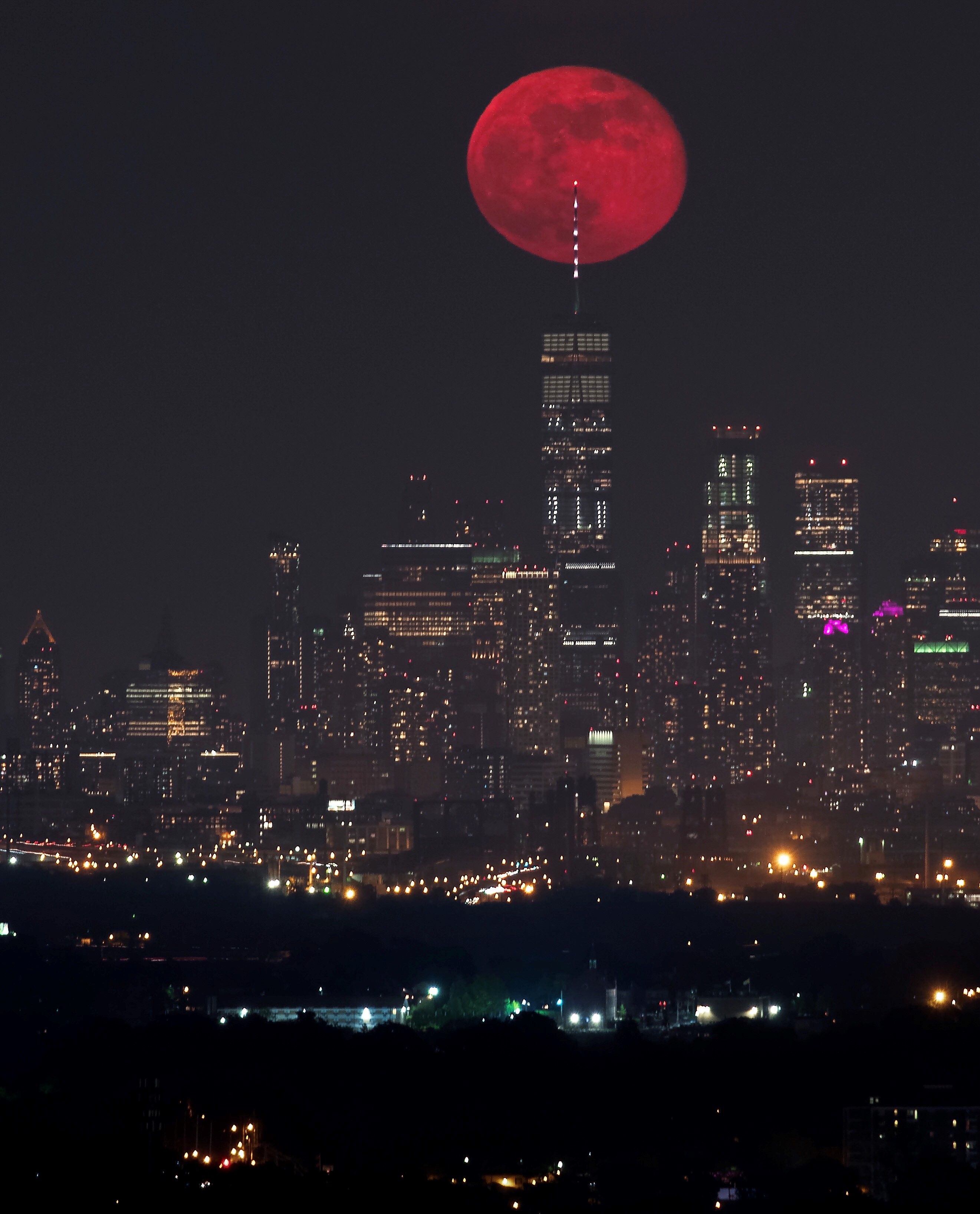
Are your photos blurry? Make sure all of the legs on your tripod are evenly pulled out and that you tighten everything on your tripod. Remove your camera strap and turn off image stabilization. Consider a cable release, mirror lockup, and 2 or 10 second timer to minimize all potential shake situations. Remember, telephoto focal lengths amplify even the slightest motion!
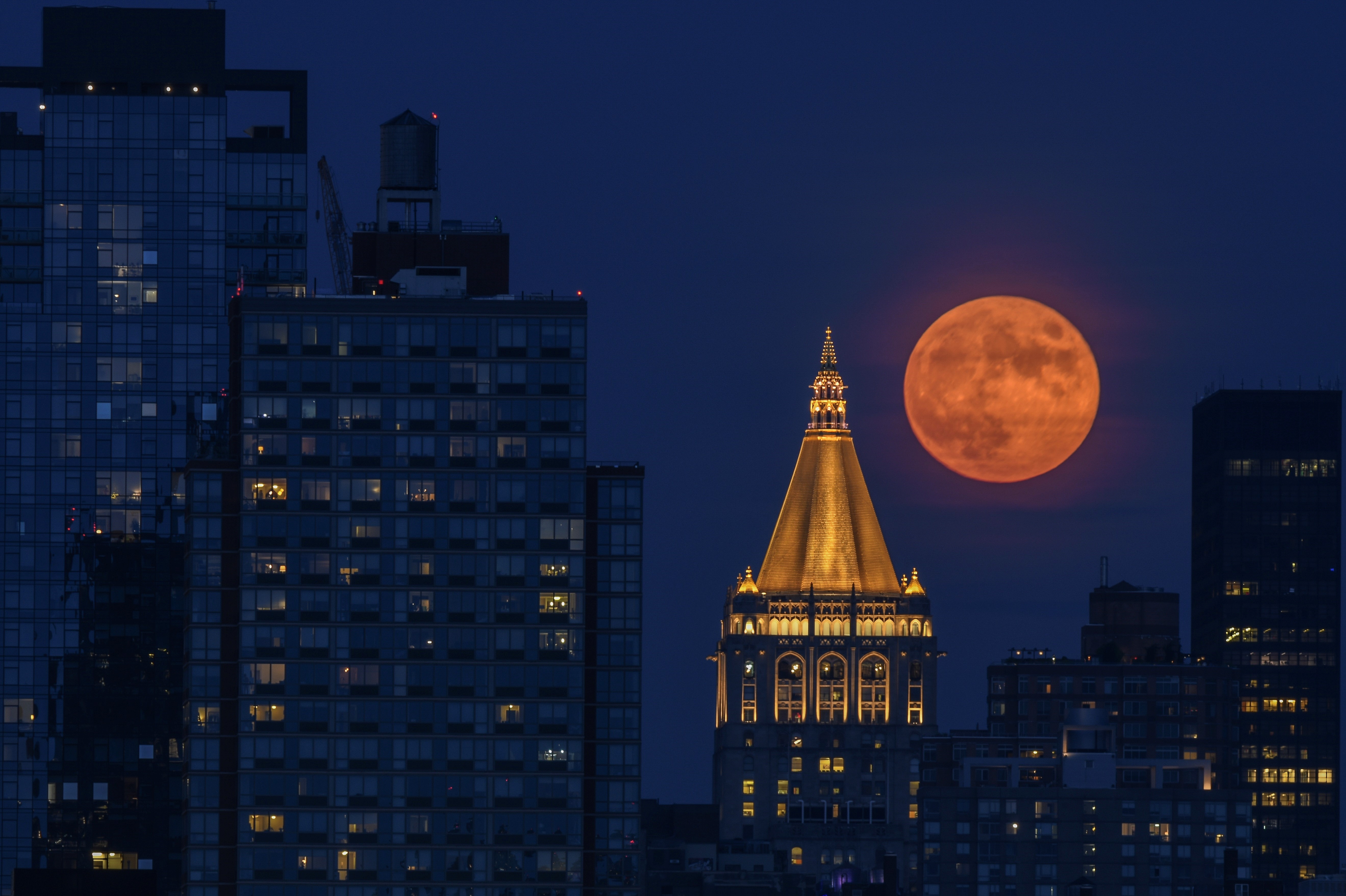
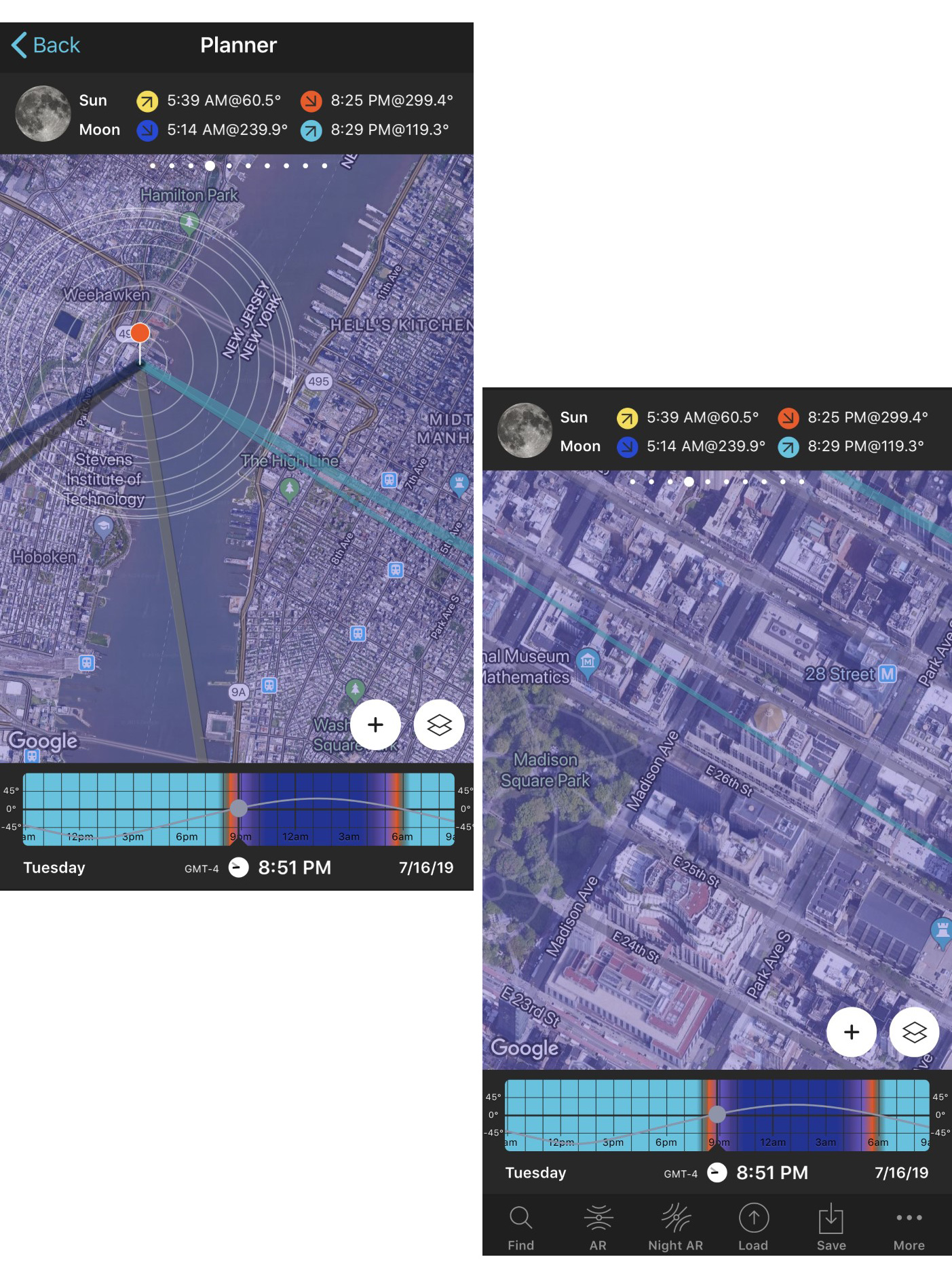
And I have just found out that I was chosen as PhotoPiller of the Day for Monday December 1st for this image! Check it out on their Instagram!
Challenges
Hazy and windy conditions can cause issues with my image. I always review an image after I’ve taken it to make sure my settings are on point. We all run into challenges while shooting. I find myself moving around! If I see things in my way, I move very quickly because there’s a very small window of time I have during moonrise.
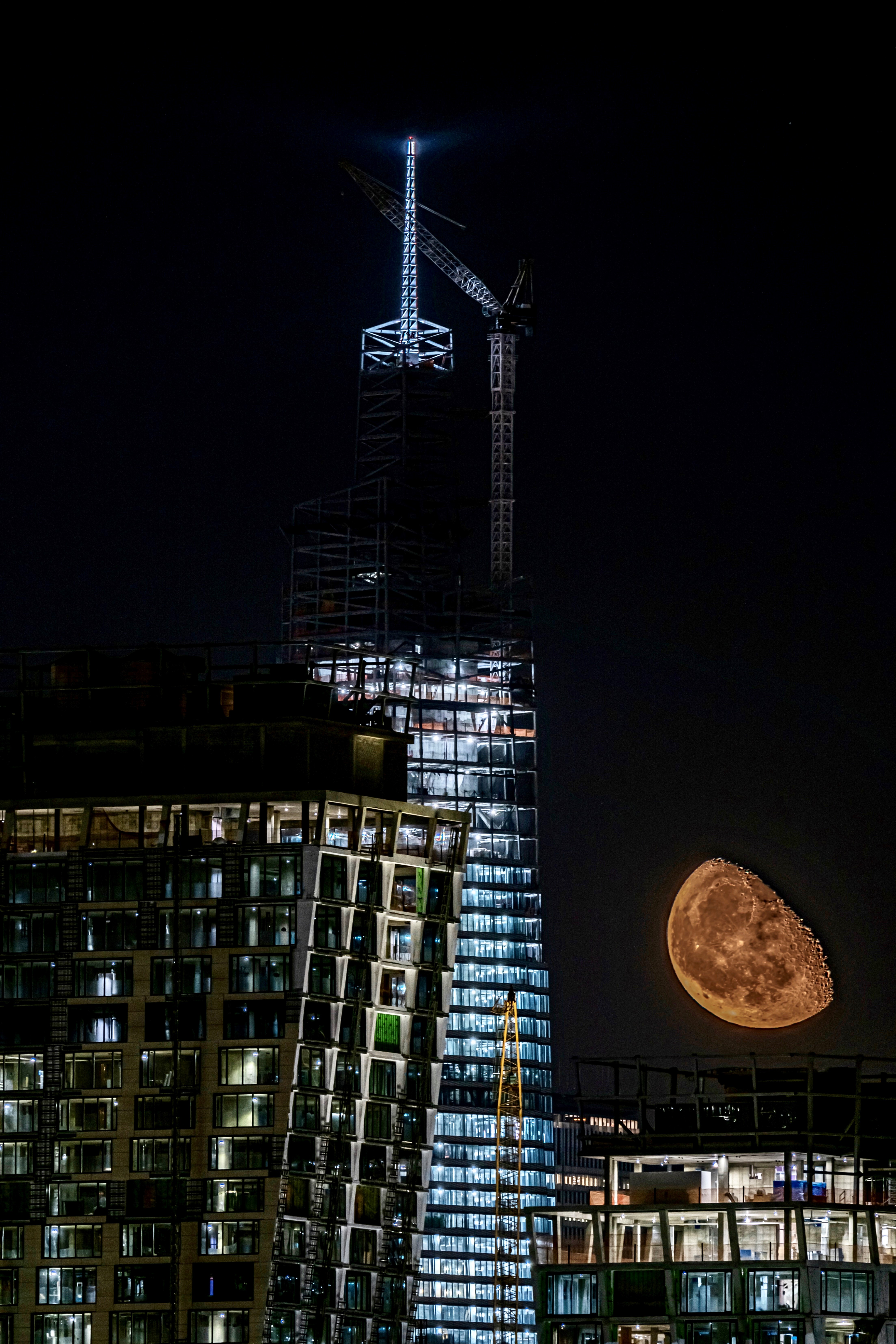
Weather
Does your next shoot have cloudy skies and or wind in the forecast? Sometimes you can get a nice shot in those conditions. Don’t give up hope and head out just in case!
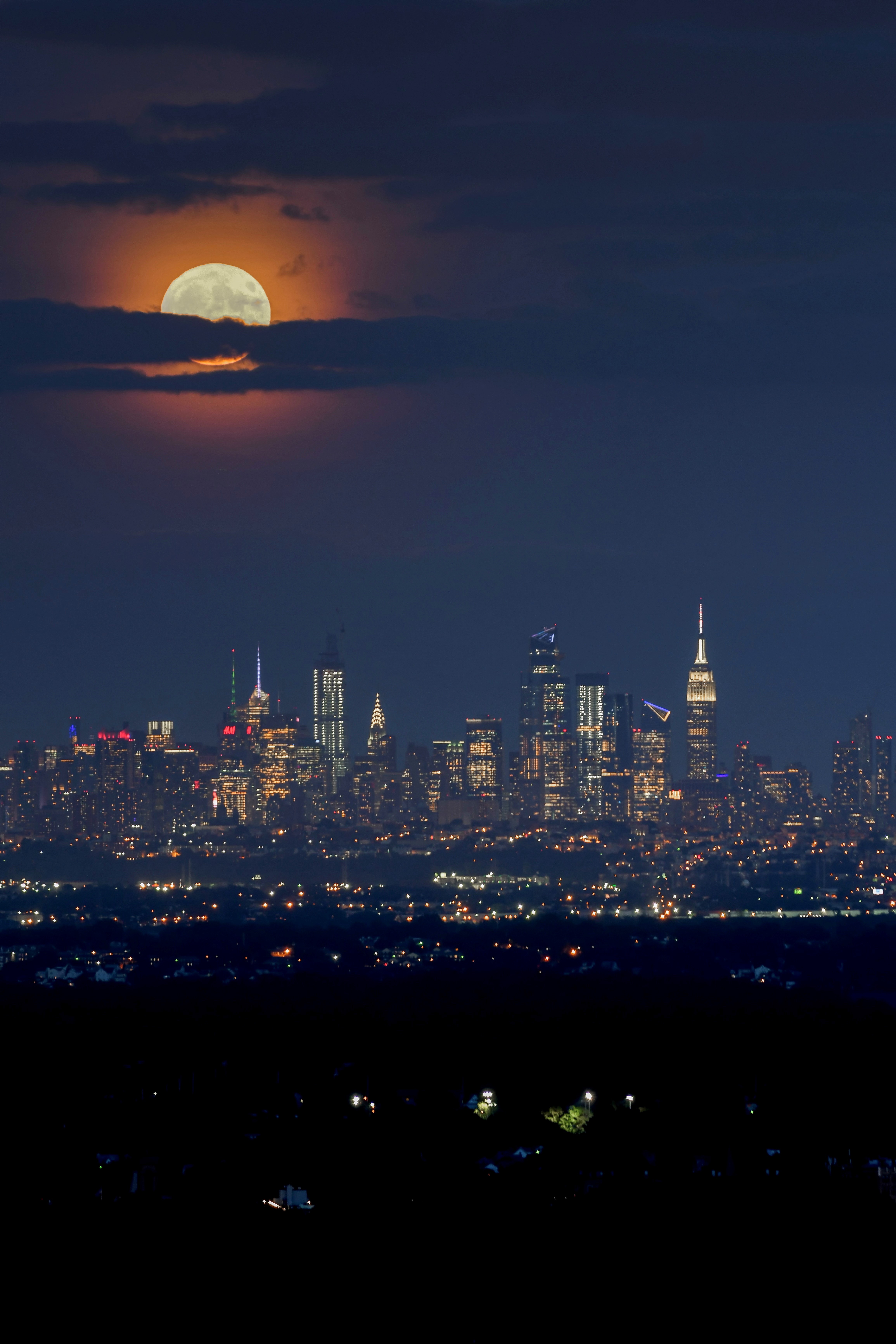
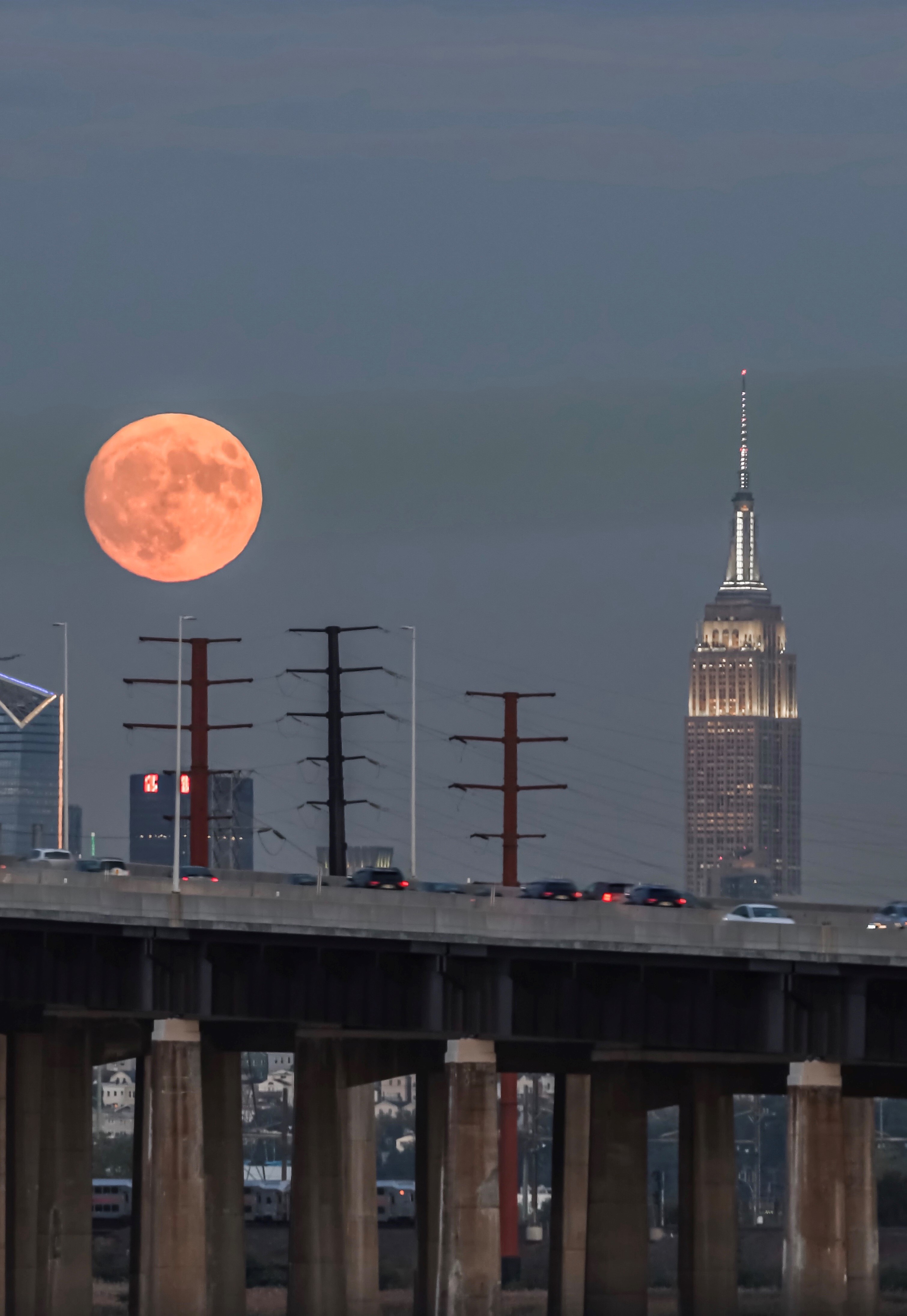
This very last shot I had to pull over on the side of the road and take the shot handheld. In this case, I had the OS on.
Techniques
Sometimes it can be really windy while I’m shooting. The first thing I do is raise my shutter speed, raise my ISO and adjust my aperture. The digital cameras these days can handle high ISO’s very well. Turn off your optical stabilization while on a tripod and remove your camera strap!
Always shoot RAW + JPEG. I’ve had circumstances where the JPEG was the better file of the two! Also, the JPEG can be opened up on almost any platform and take up less space. Sometimes a RAW file cannot be backwards compatible and you may want to go back and grab that file you’re missing from the portfolio.
